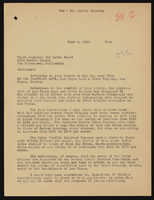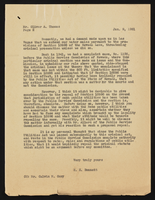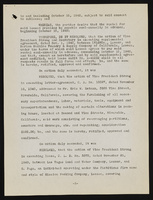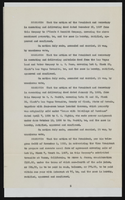Search the Special Collections and Archives Portal
Search Results
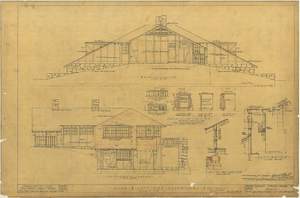
Architectural drawing of pavilion at Zion National Park, Utah, rear and left side elevations, July 16, 1924
Date
Description
Rear and left side exterior elevations of pavilion building at Zion National Park, Utah; includes interior office and lobby elevations, counter details, typical wall section and section "D"-"D." Title spelled "Pavillion" on plan. Scale: 1/4" = 1'0". "Dr. by M.B. Tr. by N.H.J.(?)" "File No. 15182-E. Sheet #5, Job #258. 7/16/24." "Recommended for approval, Daniel R. Hull, Landscape Engineer, N.P.S. Approved, Arno B. Cammerer, Acting Director, National Park Service. Date: 8/11/24."
Site Name: Zion National Park (Utah)
Image
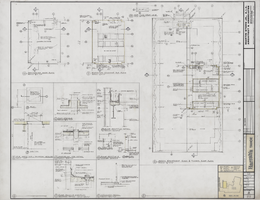
Architectural drawing of Harrah's Tahoe (Stateline, Nev.), tower roof plan and elevator machine room, December 1, 1971
Date
Archival Collection
Description
Roof plans and details for the construction of the Harrah's Lake Tahoe. Includes revision dates and key plan. Drawn by P. Original material: mylar. Berton Charles Severson, architect; Brian Walter Webb, architect.
Site Name: Harrah's Tahoe
Address: 15 Highway 50
Image
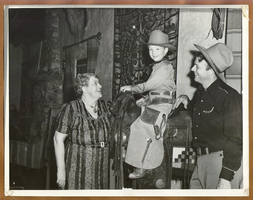
Rex Bell and Grandma Beldam with Rex Bell Jr. who is dressed in cowboy gear, seated on a saddle: photographic print
Date
Archival Collection
Description
Bell Family Scrapbook scanning, Set 4, proofed 11.04.2010 Rex Bell (George Francis Beldam )and Grandma Daisy Beldam with Rex Anthony Bell, Jr (Toni Larbow Beldam) who is dressed in cowboy gear, seated on a saddle in the great room of the ranch house at Walking Box Ranch
Image
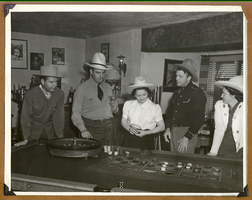
Rex Bell, 2nd from right, Bill Frolicki, and two other couples standing by a roulette wheel: photographic print
Date
Archival Collection
Description
Bell Family Scrapbook scanning, Set 4, proofed 11.04.2010 Rex Bell (George Francis Beldam) (second from right), Bill Froelich (second from left) and unidentifed people gambling in the game room of the ranch house at the Walking Box Ranch
Image
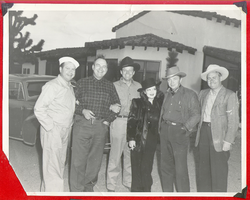
Rex Bell and Clara Bow Bell, center, with four unidentified men: photographic print
Date
Archival Collection
Description
Bell Family Scrapbook scanning, Set 4, proofed 11.04.2010 Rex Bell (George Francis Beldam)and Clara Bow center, with four unidentified men. One of the men is Bill Froelich (man without a hat)" They are standing outside the ranch house at Walking Box Ranch
Image
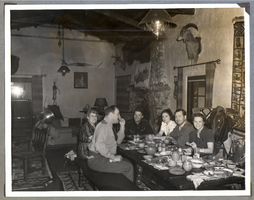
Group of people seated at the dining room table: photographic print
Date
Archival Collection
Description
Bell Family Scrapbook scanning, Set 4, proofed 11.04.2010 Dinner party in the great room in the ranch house at Walking Box Ranch. From left side of table to right: Bill Froelich (Ford car dealer from Los Angeles), Grandmother Daisy Beldam (Rex Bell's mother), Rex Bell (George Francis Beldam)and three unidentified individuals
Image

